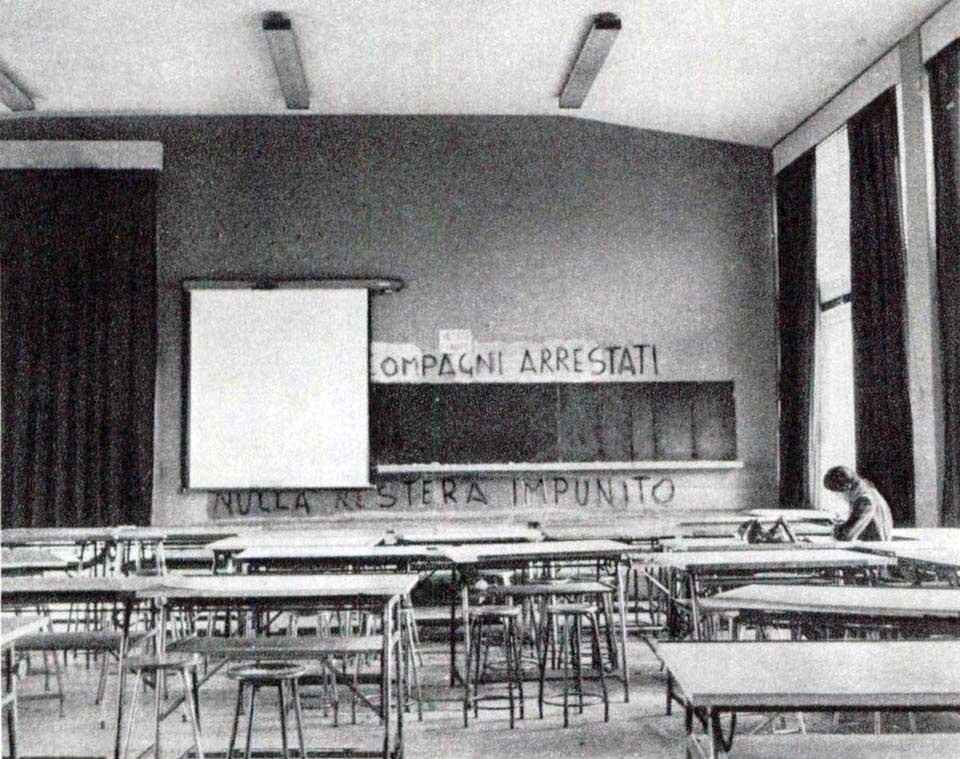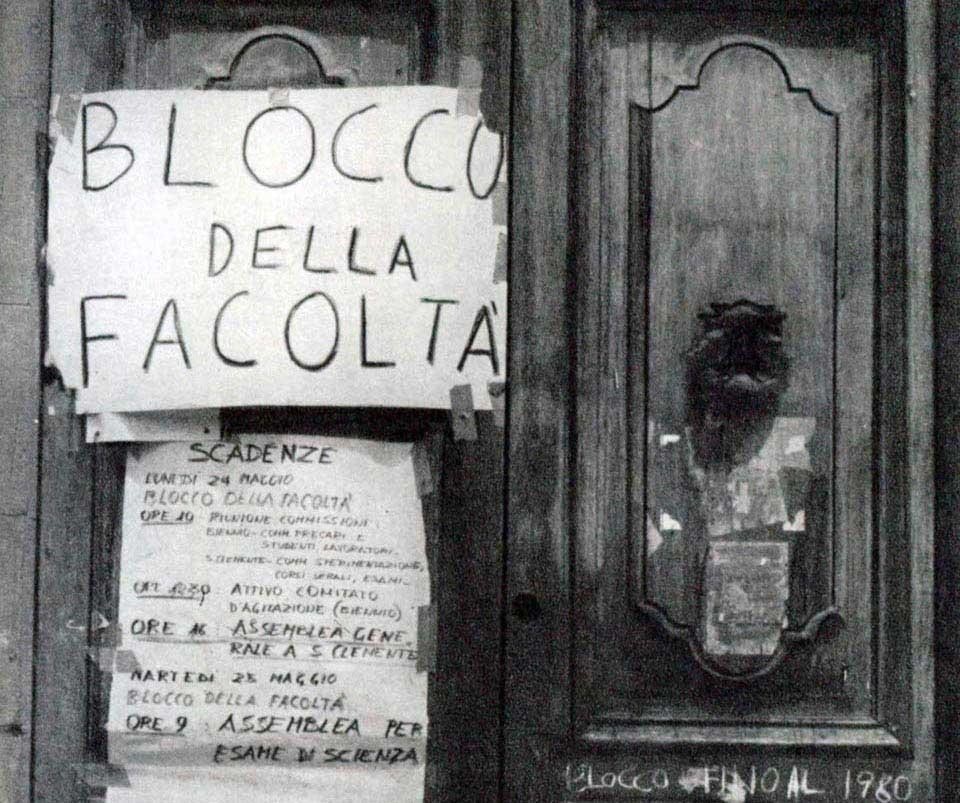This article was originally published in Domus 561 / August 1976
Faculties of Architecture in Italy: Rome / Florence
"Rome, 12 February 1975. The first day of elections in Rome's university was held in an atmosphere of uncertainty and confusion due also to serious and unjustifiable defects in the organisation of electoral operations (...). These bureaucratic muddles are accompanied by the grave attitude adopted by abstaining extraparliamentary groups and by the "Boycotting Committee"
(L'Unità — Milan, 13 February 1975)
"Rome, 31 October 1975. Unheard of tyranny against Prof. Fasolo in the Faculty of Architecture"
("Il Secolo d'Italia" — Rome, 31 October 1975)
"Rome, 24 November 1975. 11 university professors of architecture sentenced in Rome for irregular degrees. Nine months each for ideological perjury. Examinations disputed by two other professors in the university"
("Corriere della Sera" — Milan, 25 November 1975)
"Rome, 3 May 1976. University crisis. Rector resigns. Prof. Vaccaro to announce his decision today. Denouncement report by unions"
("Il Tempo" — Rome, 3 May 1976)
I have taken these few disjointed news headlines from the Italian dailies, which might be likened to the broken inspection windows in the walls of a building in statically precarious conditions.
The building in point is, if not the most illustrious, certainly the most massive Italian university. There are one hundred thousand enrolled undergraduates for the current academic year — an army, at present without a generaI. The vast majority of these students are not in regular attendance and the exiguous number of those who are actually operative are hindered by varied and variegated forms of trickery.
It is true that the pageantry of student protest, now eight years away, has grown somewhat faded, and that episodes of intolerance and insolence that were at one lime an everyday feature, are gelling rarer.
Nevertheless, since "progressive dynamics" must somehow be kept alight, the damage once done, slightly empirically, by student protest, is now scienfifically provided and bureaucratically organised by the Ministry, with its hesitations, its postponements, its incomprehension and incompetence and its half-reforms, starting with that of the comprehensive secondary school and ending (for the moment) with the flinging-open of university doors to just about anybody applying to get in.
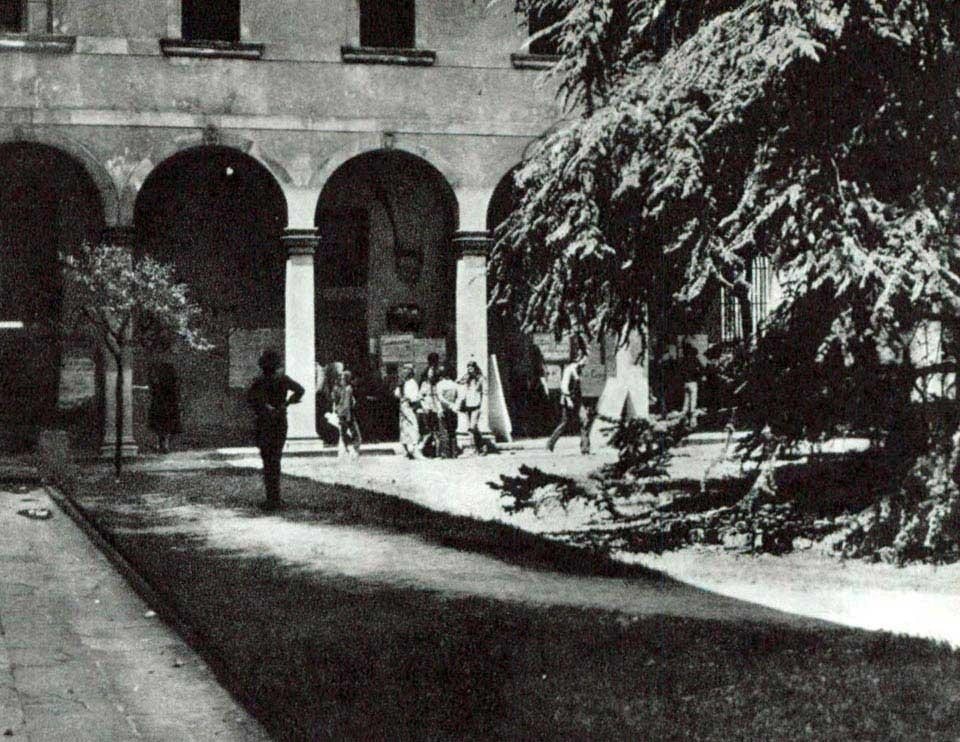
Despite this the school seemed to me in general to be far from inefficient, except that a few doubts were sown in my mind by the veiled skepticism of Faculty Head Guglielmo De Angelis d'Ossat, an illustrious scholar with a long, and perhaps too easy-going, experience behind him.
The centrai faculty premises, in a building built more than forty or so years ago by Enrico Del Debbio as an embellishment to via Gramsci, are now virtually in a state of total abandonment.
With the exception of the recent1y installed library, and the separate, deserted material-tesling laboratory directed by Cestelli Guidi, all the rest conjures up a picturesque image of a teeming and somewhat sordid microAsialic suk. Even the enchanting view of Valle Giulia to be had, or rather which would be had, from the wide-angle window of the portico on the first floor, is now obliterated by the compact dirt on the window-pane.
The other two premises recently acquired in a vain attempt to absorb the rising tides of the undergraduate population, are not more impressive. They are situated in piazza Borghese 9, in the former Faculty of Economics building, and in the Art Nouveau "palazzina" in via Cassia 32, where the Istituto di Urbanistica is housed.
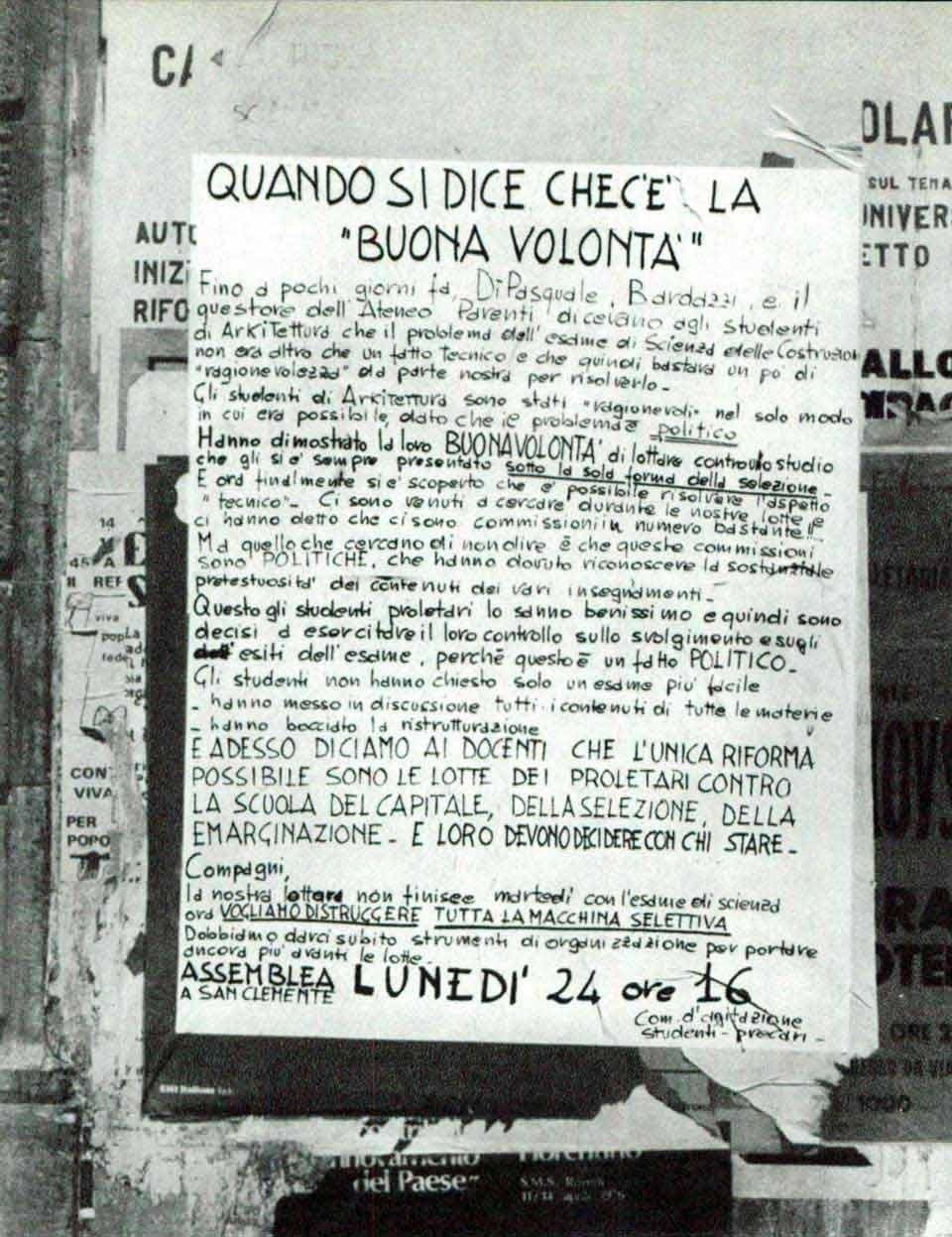
In the case of Rome there would seem to be no cause for reservations in this regard, seeing that the teaching staff are downright plethoric numerically and as far as prestige is concerned, include some of the most widely publicized Italian architects.
And yet not even this guarantee seems to be enough to dispel one's doubts. Certain proposals by exceedingly respectable professors leave me not so much baffled as flabbergasted.
That Sacripanti should have thought, a few years ago, of stirring his pupils' imagination with psychedelic experiments smacks more of a snobbish progress for progress's sake than of courageous advancement. But then there does not seem to have been much more point in Ciro Cicconcelli's attempt at utopian design taken up as a means of "liberation from the taboos of the superego".
Of notable interest, and now widely accepted, is Bruno Zevi's recommendation concerning degree project examinations carried by means of a sort of grille formed by the "Seven invariants of modern architecture". Except that a grill of this kind, which is useful for verifying what has already been done — the history of modern architecture — is very hard to conceive of as being applied to what is being done now, without the risk of falling back into a kind of worn-out academism in which the seven invariants have substituted the five orders.
The University doors, now flung open to all and sundry, have allowed the Faculty to be jammed full of unready young people who are often also unsuited to the pursuit of any such course at all
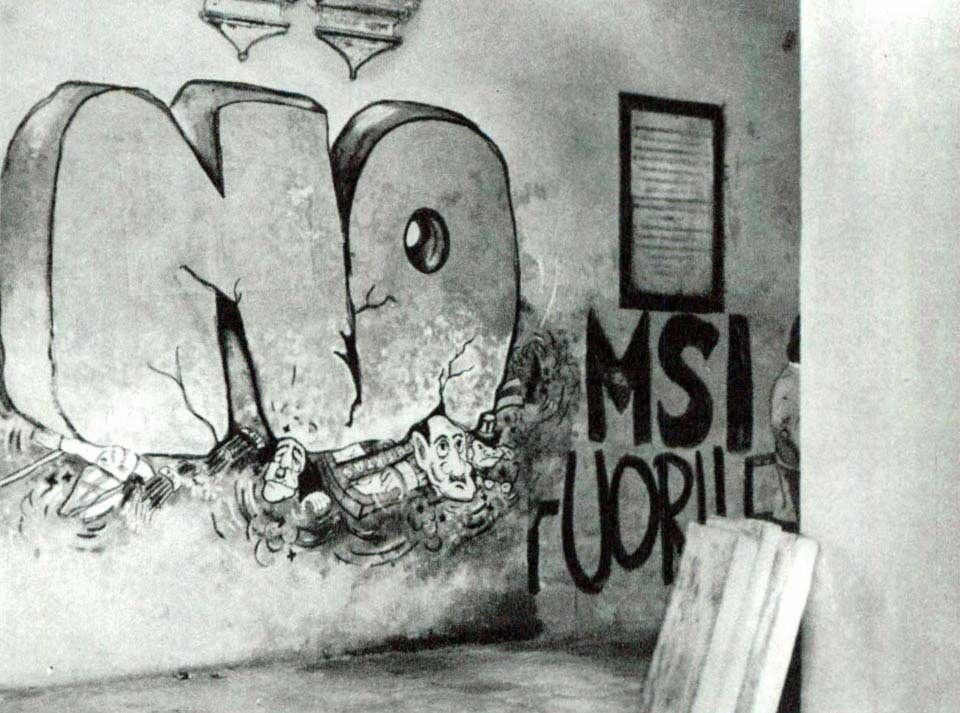
I have mentioned the shadows, half-shadows and lights of the Faculty. The resulting aura does not, for the lime being, seem to be very successful. The causes of the confusion are numerous, but three of them are, I maintain, fundamental: the prevalence of a certain abstractness in the teaching; the single-toned politicalization; and the number.
ABSTRACTNESS OF TEACHING
The downgrading, or absence, of technical leaching and direct experimentation, looked upon as part of an inferior circle and accordingly not worthy of undue attention, leaves room for a sort of vaguely unanchored abstractness inclined towards forms of raving utopia. Despite lhe proclaimed modernity, despite the positivism and pragmatism that to quite an extent inspire the present teaching policies, the Faculty is put together in such a way that when the neo-graduate comes out he has quite possibly heard a lot about sociology and mass psychology, he may perhaps know all about the history of political doctrines, but he has never seen a building-site, has not even the faintest idea what a contract specification might be, and knows nothing at all about the labyrinthine legislative machinery.
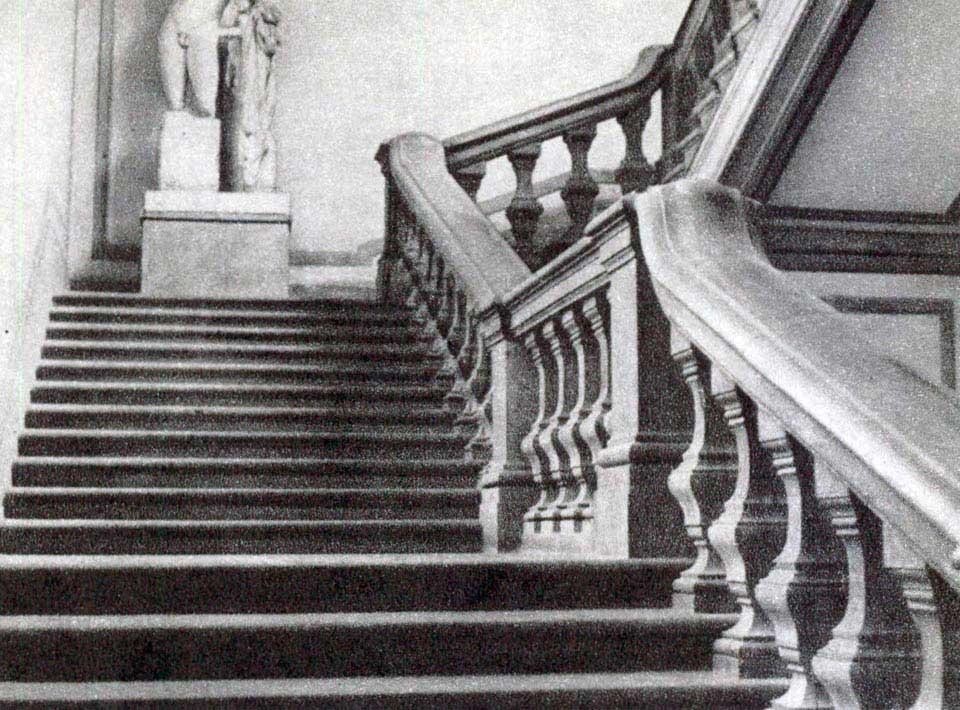
Everything that is taken away from essential teaching subjects — as well as from the rest — like those I have just mentioned, is given to the fifteen or more"optional" subjects which the pupil can choose from and among which the following are advised: Mathematics for social sciences, Political economy, Social psychology, Economic and financial Politics, History of political doctrines, Sociology. One is only left wondering why they don't also advise courses in Theology or in the Technique of the coup d'état. The whole thing would be merely facetious if it did not reveal the intention of politicalizing the faculty, as indeed has already happened, thal is, to translate it into a confessional institute. It goes without saying that the future architect can, and indeed must, chose a political position for himselt, but he has lo do this as a free citizen and not as an architect.
THE NUMBER, i.e. not the biggest cause in terms of spiritual and cultural effects, but certainly the most important as an explosive power. The Rome Faculty, in this current academic year, has 17,000 enrolled undergraduates who, if they all turned up al once, would have to camp in the Valle Giulia meadows where they would give rise to an original school of architecture en-plein-air with an impressionist flavour. In effect, not more than 3,000 actually attend the faculty, but should they wish it, all the students will get their degrees within five to seven years, alter which they will find themselves — unless they remain unemployed, as is unfortunately probable — with the many roads open before them of which Bruno Zevi spoke to me with admirable faith. Of these numerous paths the roughest of all will be that of architecture. The outcome of that senseless invention, the "open university", turns out to be — nor could it have proved otherwise — strictly antisocial. This Faculty in particular has stooped — though not guilty — to acting as a factory for the manufacture of unemployed, displaced and frustrated persons. The numerical pressure is also having a deleterious effect on teaching standards.
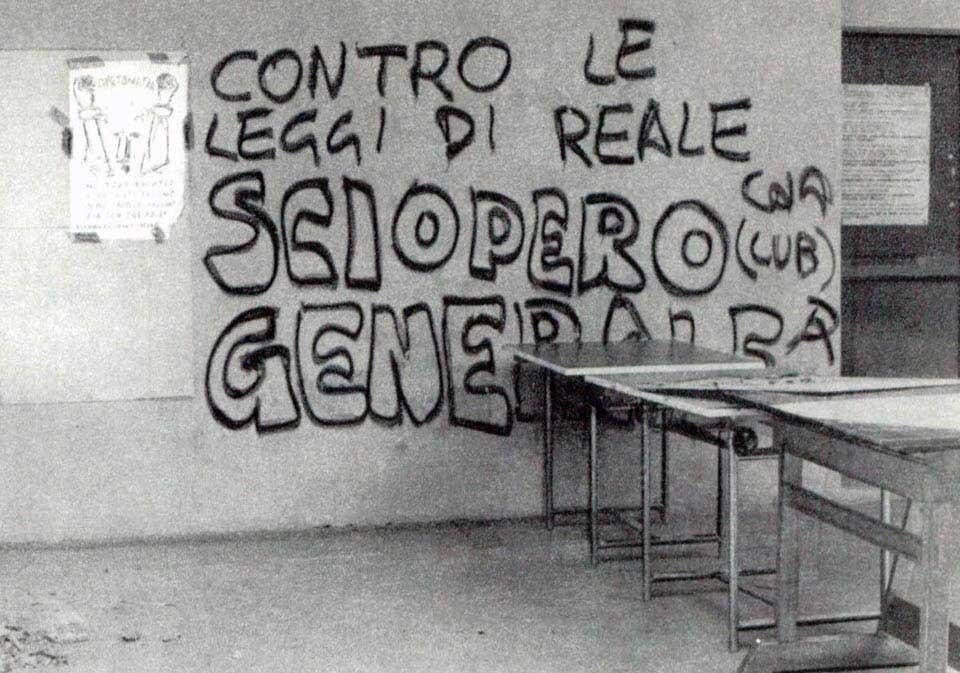
Next after Rome in student numbers comes Florence, with the handsome figure of 8,876 enrollments for the current year, of whom 1,519 are foreigners coming chiefly from Israel and the Near East. Of all these the ones who attend, says the Head Silvestro Bardazzi, do not exceed 25% of the total. Nor for that matter could the present space and facilities fully accommodate such a host of would-be architects. The facilities would in fact be inadequate despite the size and prestige of the three buildings in operation: the fifteenth century Palazzo S. Clemente erected by Gherardo Silvani in via Micheli, which, with other services, houses the Dean's offices, the Library and, in the adjoining smaller building, the Istituto di Restauro; the Accademia di Belle Arti building, formerly Ospedale di S. Matteo, in via Ricasoli 66; and lastly, the former Convento di S. M. degli Angeli at the Arcispedale di S. M. Nuova, where amongst other things, is housed the "Official Materials Testing Laboratory".
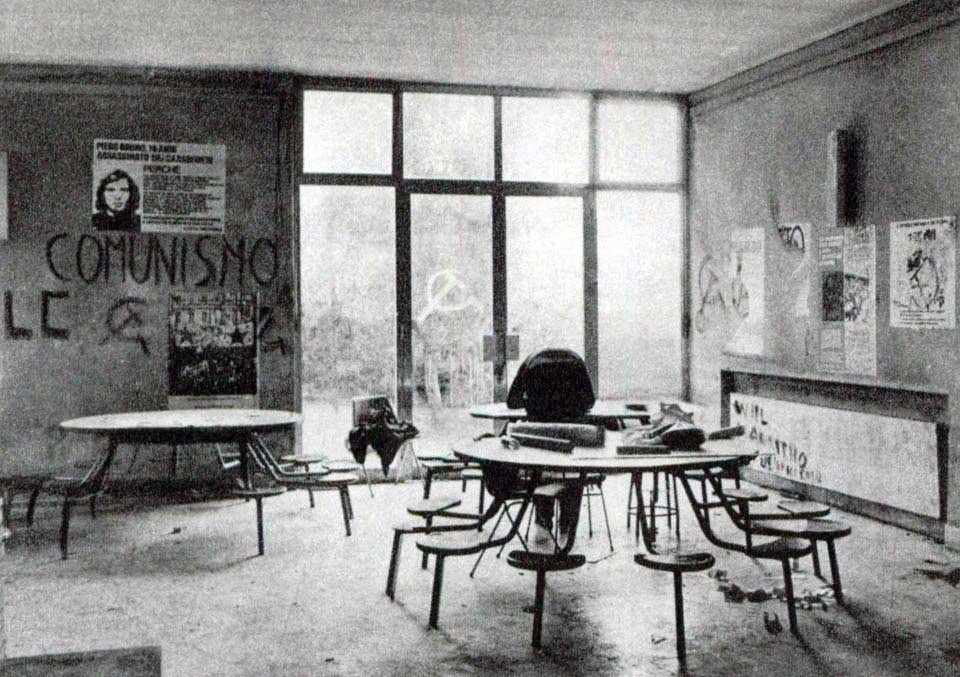
There follows a perhaps plethoric list of the optional subjects which do not, for example, include Rational Mechanics. They do instead include Descriptive Geometry, and Drawing and Relief, which ought not to be "optional" but are and, what's more, as far as I could gather, are quite deserted. On the subject of Composition, I picked up one or two complaints, but if a "modern tradition ", which dates from Adalberto Libera and is at present guaranteed, with others, by Gamberini, manages to withstand the miscellaneous revivals that burst out elsewhere, then this is in itself a result.
At the present stage the most efficient situations are to be found in the departments of Science of Constructions and History. Apropos the latter I happened to attend a seminar on the Architecture of the Italian 19th century, in which Borsi put forward an original view for the study of that industrial archeology which is already cultivated in Belgium and in Britain. We should not be distracted by these details. The interesting fact is that this seminar (attended, depending on the days, by from 10 to 30 or 40 pupils) was held not in the Faculty but at the Gabinetto Vieusseux in the Palazzo Strozzi because that, I was told, is a "suitable" place and one can at least be sure "of not being disturbed".
In reality the premises I have outlined here, with their walls pleasantly historied by political comic-strips, are certainly more convenient places for noisy, tumultuous meetings than for seminars or for working on that drawing-board which in the Faculty today has become a sort of "mysterious object".
